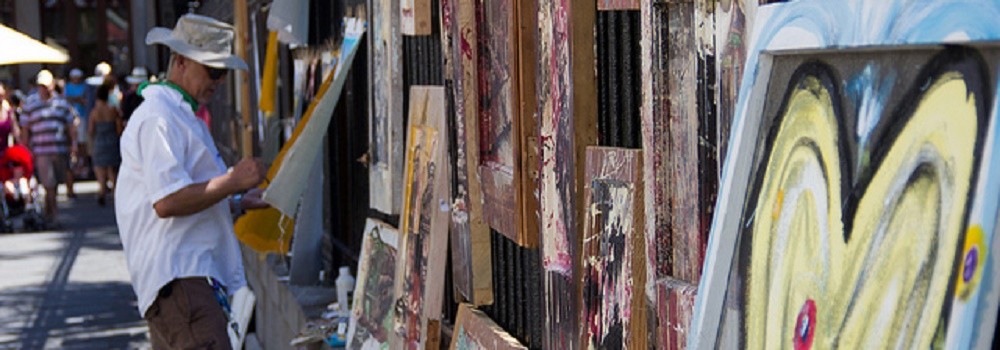The Strategy of a Well-Fed Artist
“Can you explain why your art is worth owning, or what about you or your art is worthy of their attention?” he writes, emphasizing the importance of successfully communicating the worth of your art.
Rea goes farther with this point. New artists, she says, need to be able to come up with a business strategy based on their own values and the values of their target audience. They need to connect with the buyer beyond just the sale—the experience of art should be part of what is offered.
“A lot of artists are under the illusion that if they just hone their craft that one day they’ll be discovered. One day they’ll be noticed. And it couldn’t be further from the truth,” she says.” You have to, very simply, provide value to a target market, and it has to be unique value. It really has to be unique because the world is flooded with amazing talent. You have to add value above and beyond the art that you make.”
[pullquote]You have to, very simply, provide value to a target market, and it has to be unique value. It really has to be unique because the world is flooded with amazing talent.[/pullquote]
Susan Doyle, an artist based in St. John’s, Newfoundland, has been painting for herself and for private commissions since 2004 and began marketing and selling her work publicly this past January. She says that the business side of being an artist is something she compartmentalizes.
“I’ve treated one day as painting day, and one day as business day,” she says. “ So I can keep my thoughts straight and not be overwhelmed with the business side of things to interrupt the creative. It’s definitely a hard balance.”
But, although she doesn’t view herself as a businesswoman, Doyle has been able to hone in on her own style and on her own artistic values and market them. “Now that I’m actually really comfortable with where I am artistically, I’m actually able to market myself and be a little bit more confident with it,” she says of her progress as an artist.
“You have to have something to back up what you’re marketing. There’s a million and one artists out there, you know, everyone’s an artist. But I guess tapping into something and being able to produce something that you’re really comfortable with is key.”
The Tools: Community and Self-Marketing
Straight out of art school, Shukla traveled and had some success with galleries that were interested in his photography and included his work in shows. After moving home to Winnipeg and spending two years drawing every day in order to explore his creativity and begin creating a body of work, he was ready to start selling his art. “I really wanted to get a show together with my drawings, because I felt like I did it on my own,” he says. The gallery he partnered with helped to advertise, but didn’t contribute financially to the show.
“I was really outgoing, I was kind of out of my character to be charming and to invite people. Try and stir it up a bit, stir up the hype,” Shukla says, “I sort of built my confidence again.”
The show was a success, but he says that he came away with an awareness of how important assistance could be. Friends in the artistic community had helped him with things like graphic design and handing out invitations, but after the show was finished, tired of the cycle of famine and feast, he decided it was time to connect with an art dealer.
“I didn’t want to ruin five years of my life again to make lots of money to then just sort of live without work.I just didn’t feel I could do it again,” he says.































Share the post "The Strategy of a Well-Fed Artist"